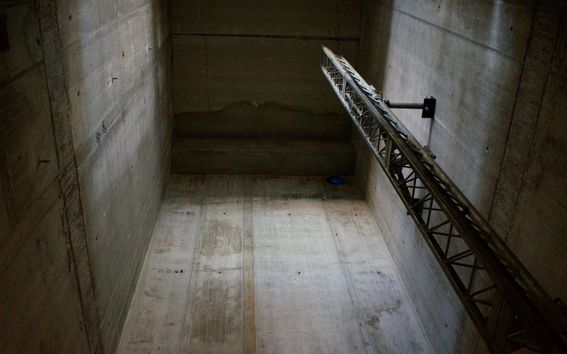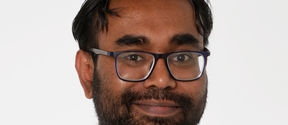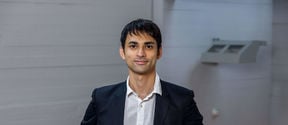An exhibition at Oodi takes the visitor on tour into the library infrastructure

Memory Machines, a performative art project by artist, architect and researcher Samir Bhowmik combines dance, immersive theatre and circus with a guided walking tour that moves through the concealed infrastructural sites and operations of the new Central Library Oodi. The exhibition will open in January 2019.
“The point of the project is to make citizens and visitors aware of the vast infrastructure working in the background that makes the building’s operations possible. This infrastructure includes book sorting facilities, logistical operations, air-conditioning and heating, lighting and digital media systems. The visitors will gain knowledge about how libraries operate and understand the energy consumption, embodied energy, and the labor that goes into providing library services at Oodi”, explains Bhowmik. He has partnered with 00100 ENSEMBLE to produce the art project.
It will be an exclusive event, as only three events are scheduled and thus the number of participants can only be between 15-20 per event. The work will be video-documented and will be exhibited in New York by the Finnish Cultural Institute in 2019.
Revealing the logics of neural nets
Bhowmik, along with other Finnish artists Tuomas A. Laitinen, and Jenna Sutela, was commissioned to create works that examine the new intelligences. The Library’s Other Intelligences is an art project organized by the MOBIUS Fellowship Program of the Finnish Cultural Institute in New York in collaboration with the Helsinki Public Library.
Visitors to the library will be invited to engage with the works – and with the new building – by attending live performances, embarking on expeditions, and reimagining how we will read, listen, and learn in a new techno-cultural future.
“These artworks reveal the alien logics of neural nets, give voice to machinic and speculative languages, and make visible the material infrastructures that allow intelligence to circulate. The exhibition’s featured artists are known for work that engages with AI, biological intelligence, digital culture, and the infrastructures of modern societies”, states the Finnish Cultural Institute in New York.
Research on museum infrastructures
The Memory Machines project is part of Bhowmik’s post-doctoral research at Aalto Media Lab. In his doctoral thesis Deep Time of the Museum Bhowmik studied the infrastructures of museums. Now in his post-doc The Materialities of Digital Memory he is looking at the energies and infrastructures of memory institutions in general including libraries, archives and museums.
“We need to examine the impact of new media technologies on the environment and cultural memory. In this, we must take a critical approach to design and media, instead of being simply fascinated by new technologies and driven by industry. And, at the same time involve people and communities in our research and findings”, says Bhowmik.
He is continuing with his three year post-doctoral research at Aalto funded by the Finnish Cultural Foundation until mid 2020, which will also result in a book. His research is complemented by the art projects. In Berlin, Bhowmik is also working on an energy art installation “Polarity" inside the ruins of the Franziskaner Church, to be tentatively in place in the summer of 2019.
Bhowmik is also developing a multi-channel AV installation “The Mother’s Mouth” based on the archived voices of WW1 prisoners of war in Wünsdorf Camp in Germany.
Recently he was awarded 108 200 euro by Kone Foundation for his upcoming research project: “Imaginary Natures: On Extractive Media and the Cultural Memory of Environmental Change.” The proposal presents a novel approach to citizen engagement with advanced imaging technologies and machine learning to explore environmental change. It conducts field expeditions to sites of media infrastructures, mineral and energy extraction overlapped with wild habitats. Collaborating with memory institutions, a large intelligent archive is co-constructed for environmental memory. New tools and methods are developed to enhance society’s knowledge and comprehension of environmental change.
The opening celebration of the exhibition will take place at Oodi on Friday, January 11, from 7 to 10pm. The curators and artists will host a symposium about the exhibition on Saturday, January 12, from 2 to 4pm. Welcome!
- Published:
- Updated:
Read more news

Broadband miniaturized spectrometer research receives QTF annual discovery award 2024
The clarity and compelling presentation of the research were one of the reasons why Doctoral Researcher Md Uddin earned the prize for the research paper, which was published in Nature Communications.
Robotics needs safe behavior patterns
Robotics and autonomous systems are developing rapidly. Algorithms that withstand disturbances and uncertainties in the system model and environment are critical for development.